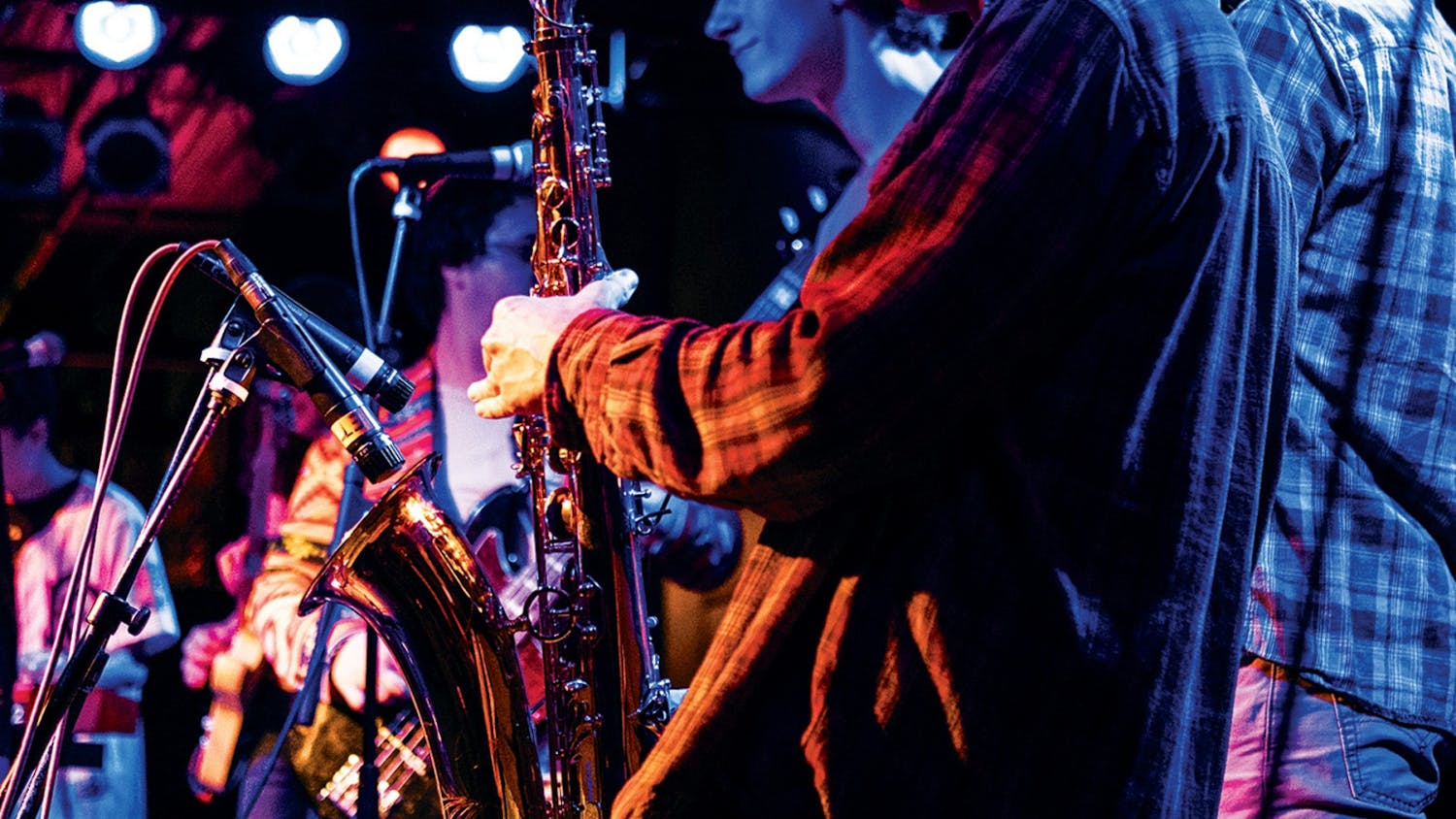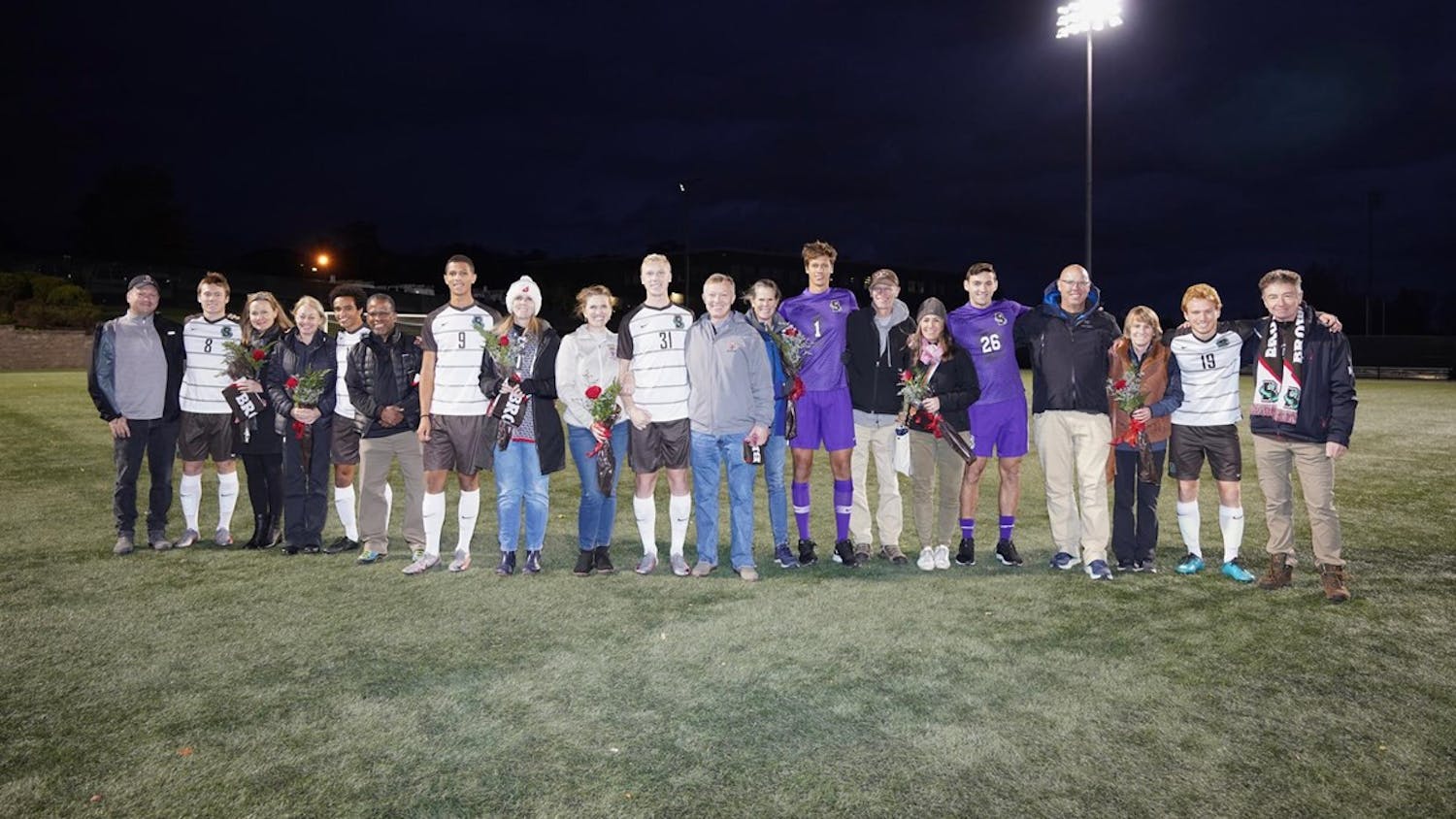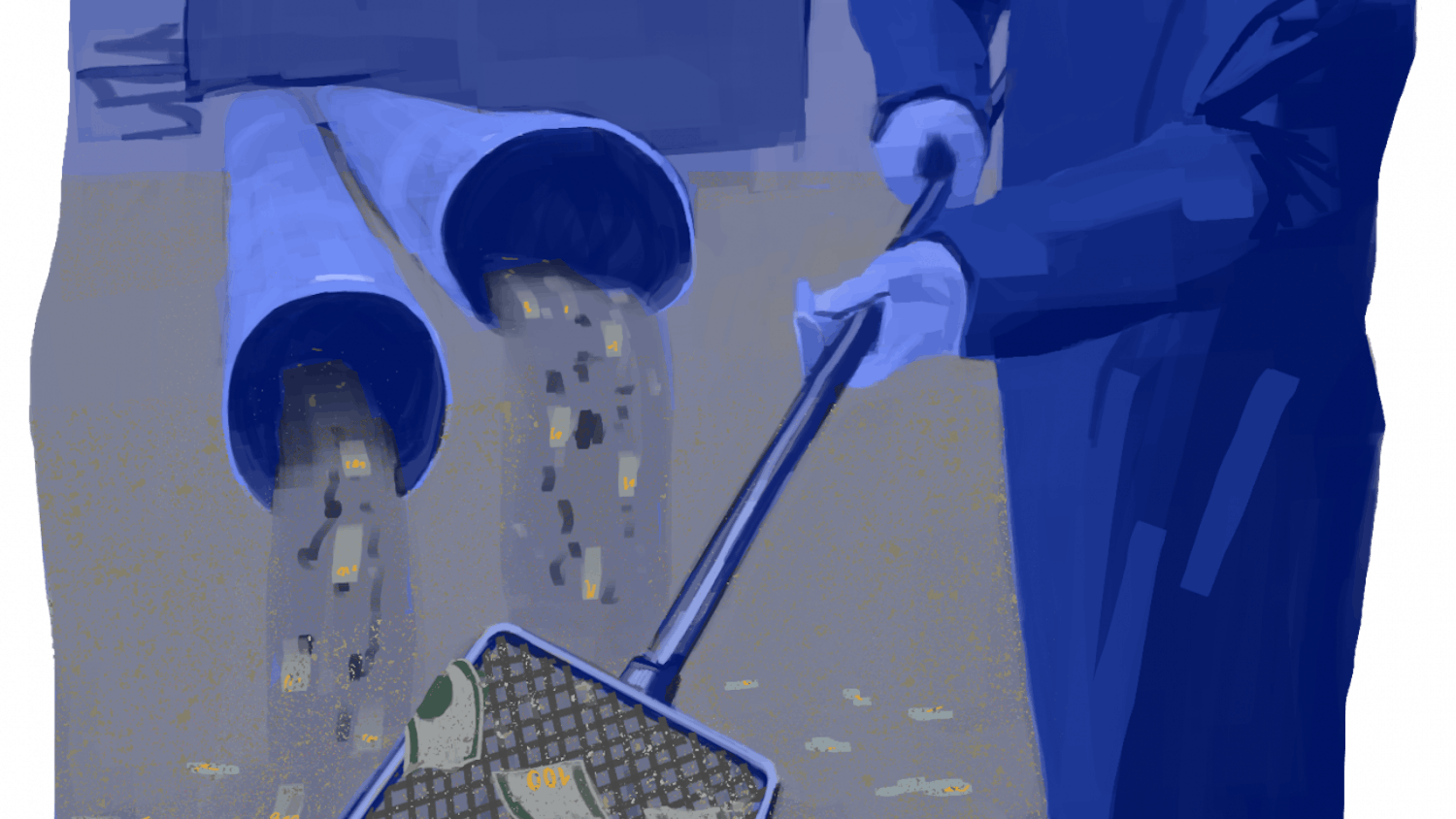Correction appended.
Shortly before midnight on Saturday, cavernous Sayles Hall echoed with the chatter of students in Halloween costumes. Lumberjacks, police officers, fairies and hundreds of others packed the hall, and some even lay down on Sayles' hardwood floor.
As the clock approached midnight and the lights dimmed, grim-faced pallbearers marched in with a coffin. The room cheered as Lecturer in the Department of Music of Music Mark Steinbach, dressed as a vampire, emerged and swooped up the stairs to the hall's large balcony, where he played Bach, Chopin and "Monster Mash" in a favorite Brown tradition — the midnight organ concert.
But setting the mood for Halloween and the other three "scariest nights the year" — the nights before first-year orientation and each finals period — is only part of Steinbach's job as University organist and instrument curator. The Kansas native also teaches music theory, offers organ lessons to three Brown undergraduates and serves as organist and choirmaster at St. Paul's Church in Wickford.
He also cares for the organ in Sayles — no small task, given the instrument's age and complexity.
The prized Hutchings-Votey organ — the largest of its type in the world — arrived in Sayles Hall in 1903 following a donation from Lucian Sharpe, an 1893 graduate, according to the University. The organ fell into disrepair during the 1980s because of hurricane damage to Sayles' roof, Steinbach said, but it was partially restored in 1992. The current console — where the keyboard and other controls are located — was installed around the same time and is the third in the organ's life.
An organ can be thought of "as architecture — representing its time," Steinbach said, adding that few Hutchings-Votey organs remain unaltered. Yale had a Hutchings-Votey that they kept adding to, which was like "painting over a painting," he said, but Brown's has not been "mucked with."
Organs are the oldest keyboard instruments and even appeared at gladiatorial games in Ancient Rome, Steinbach said. Back then, air was hand-pumped through the organ, but Brown's has an electric system that pumps air through a maze of tubes into the more than 3,000 musical pipes — the tallest is 16 feet, according to Steinbach.
The console is daunting — it boasts three keyboards as well as foot pedals that control the organ's largest pipes and resemble giant wooden piano keys. The organ also has nearly 70 "stops," knobs that turn on and off sets of pipes that mimic distinct sounds, including flutes, trumpets and even the human voice.
"Think of it (as) being a synthesizer hundreds of years before the synthesizer was invented," Steinbach said.
Doors in Sayles' balcony allow access into the hidden chambers where tiny metal pipes are lined up in sequence by height and tone and huge wooden square pipes loom. You could fit several small children in the pipes, Steinbach said.
The organist must pull a stop, lining up a set of pipes with a source of air, so that the keyboard can produce sound. Touching the keys then sends an electric signal that opens the pipes, allowing air to rush through and generate the desired notes.
Most of these pipes are housed in nearly air-tight rooms whose slatted walls can swing open at the push of a pedal, creating a crescendo.
"I like to talk about it in terms of food," Steinbach said. On the Boston-made Hutchings-Votey, he has American food and spices at his disposal, he said, but to translate from a French score he needs to adapt his ingredients — adjusting the stops to open new sets of pipes — to produce something similar to the piece's original flavor.
Organ pieces call for multiple stops to be open simultaneously, and depending on the piece of music, these stops may need to change multiple times within the piece. To do this, the organist can designate "pre-sets," which cause multiple stops to pull at the push of a button. Organ music is composed of three staffs: one for each hand and one for the keyboard at the feet.
With over 3,000 pipes available, an organist's mind and body are kept busy — they wear special shoes whose soles are designed to slide across the pedals.
"It's so physical. It's like exercise to me," Steinbach said. "I can't sit still anyway."
Steinbach first took up the instrument in his youth. A piano player from a young age, he switched to organ in sixth grade, he said. He started playing in his small town's church, and drove to Wichita, Kan. for lessons. "I guess I got hooked," he said.
After earning a bachelor's degree in music from the University of Kansas, Steinbach continued to pursue music as a graduate student at the Eastman School of Music in Rochester, N.Y., where he was one of about 40 students focusing on organ performance. Besides being able to play the colossal instrument, organists study the theory and history of music, in large part so that they can accurately interpret the pieces they perform using their knowledge of specific composers and historical periods.
Steinbach is mainly a musician and teacher today, and he said that one of his titles — instrument curator — is a bit of a misnomer. He manages the cleaning and tuning of the organ in Sayles and the organ and piano in Manning Chapel, but can't really help students who e-mail him for help with their trumpets, which he said happens occasionally.
Organ curator would probably be a more accurate description, but "people who decide titles got nervous with that," he said.
The three students Steinbach teaches each meet with him for an hour a week, and they also take occasional field trips to play organs at other schools and churches.
One of those students, Noble Macfarlane '10, grew up in San Francisco, where he and his parents sang in an Episcopal church choir. Like Steinbach, Macfarlane began playing the piano as a child. But when he moved to a new town in middle school, he couldn't find a piano teacher and took up the organ instead, he said.
Now Macfarlane sings in the choir at St. Stephen's Church on George Street and practices on the church's organ.
The math concentrator has taken more classes in the music department than in math, but "the organ is all about physics, which is why I love it," he said.
In his lessons, Steinbach helps Macfarlane examine the historical context of pieces and develop an accurate interpretation. There's a saying, he said, that "the beast never breathes" — it takes a conscientious organist to make the instrument mimic the natural phrasing of a singer's voice.
Putting together an entire piece is a long process of synchronizing a composition's separate layers. Macfarlane said first he learns to play the pedal part, then the left hand's part. Then he puts the two together before learning the right hand, continuing to practice the piece with different combinations of the various layers. He tries to practice every day, he said, sometimes skipping a day and making up for it later.
Rosanne Hui '11 has been taking lessons with Steinbach since the spring of her freshman year. "I feel like I moved to Sayles after I started playing the organ," she said. "It's like my home."
Hui said she likes the instrument's dynamic and theatrical qualities, which make playing it quite an experience. "It's like driving five cars at the same time," she said.
An article in Tuesday's paper ("Breathing life into a storied instrument," Nov. 3) incorrectly identified University Organist Mark Steinbach as a visiting assistant professor of music. Steinbach is a lecturer in the Department of Music.
A photo caption accompanying the same article incorrectly identified the instrument a student was playing as Sayles Hall's Hutchings-Votey organ. While another photo accompanying the story showed Steinbach playing the Sayles organ, this photo showed a student playing the organ of St. Stephen's Church on George Street.




